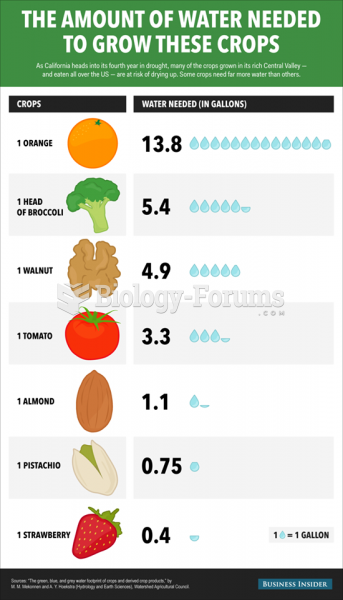|
|
|
The effects of organophosphate poisoning are referred to by using the abbreviations “SLUD” or “SLUDGE,” It stands for: salivation, lacrimation, urination, defecation, GI upset, and emesis.
More than 20 million Americans cite use of marijuana within the past 30 days, according to the National Survey on Drug Use and Health (NSDUH). More than 8 million admit to using it almost every day.
One way to reduce acid reflux is to lose two or three pounds. Most people lose weight in the belly area first when they increase exercise, meaning that heartburn can be reduced quickly by this method.
Throughout history, plants containing cardiac steroids have been used as heart drugs and as poisons (e.g., in arrows used in combat), emetics, and diuretics.
When blood is exposed to air, it clots. Heparin allows the blood to come in direct contact with air without clotting.
 (b) Climate diagram for a rain forest climateâ€â€ÂKuala Lumpur, Malaysia. (c) Climate d
(b) Climate diagram for a rain forest climateâ€â€ÂKuala Lumpur, Malaysia. (c) Climate d
 This 80-year old man in a village in Hubei, China, has slowed down, but he has not retired. He is ...
This 80-year old man in a village in Hubei, China, has slowed down, but he has not retired. He is ...





